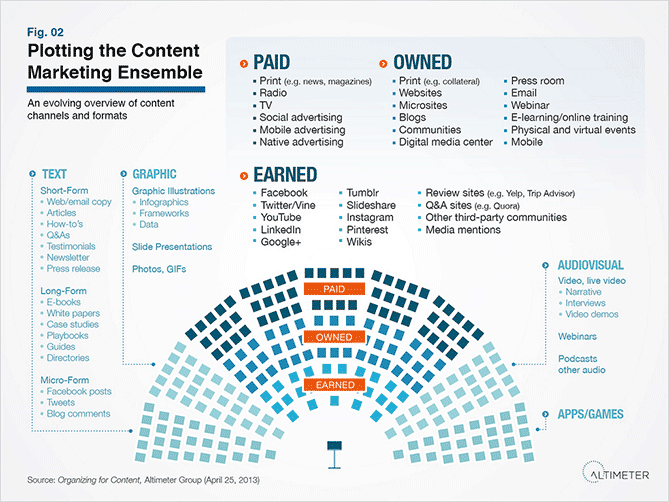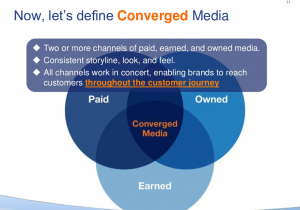In some ways much has changed since I last wrote about POEM, the Paid-Owned-Earned-Media framework. And perhaps not surprisingly for a strategic framework, some things remain the same. But the choice of media channels is a critical decision for marketers at any organization, and especially for values-based organizations and those seeking social change in a media-and-message saturated world. So let’s revisit the POEM framework to look at what’s the same, and what’s changed, and what’s most helpful for today’s change marketer.
What’s the Same for the POEM Framework
Let’s start with what has not changed. (It’s a shorter list.)
- The starting point is still your audience, your customers. Where are they?
- It’s still generally true that “Paid jump starts owned, Owned sustains earned, and Earned drives cost down and effectiveness up” — although your mileage may vary.
- Within organizations and within the marcom industry itself, a raging debate continues about who should act as commander-in-chief and who should control what channels, especially for content marketing and social media. The current top contenders continue to be the Marketing department, the PR/Communications department, or the Digital/IT department.
- The proliferation of new media outlets and types continues.
- Despite all the talk, there is still no accepted generally accepted standard for measuring cost-effectiveness or ROI across media channels.
What’s Changed for the POEM Framework
It is clear within the media and marcom industries (although not yet to consumers, nonprofits and most SMBs), that over the past few years the boundaries between paid-owned-earned media have nearly entirely blurred, melted or converged.
Altimeter’s diagram illustrates a marketer’s definition of blurred boundaries and converged media. From the POV of your customer or any ordinary media consumer, a clearer label might be ‘confused’ media. The rise of branded content placed on the websites of leading media outlets, combined with sponsored tweets and Facebook stories on social media networks, makes it easy to understand why customers are often unclear about whether a particular message in a particular channel is paid, owned or earned media.
This confusion matters for two key reasons: inconsistency and the sniff test. Your message or brand is diminished when it is inconsistent (or even contradictory) across media channels because department silos are not coordinating. Your message or brand is diminished if readers/viewers/listeners sniff out a sales message when they expect an unpaid/earned/authentic message.
So what’s a marketer to do when media boundaries are disappearing and customers are simultaneously skeptical and seeking engagement with mission-driven organizations?
Toward a Musical POEM Framework
At the moment, the strategic framework that seems to work best for our clients and for me is that of a music group. (A symphony orchestra seems a bit much, but a chamber orchestra or ensemble seems about right.) Each musical instrument has its place and its strengths and the musicians build on each other, but most important there is a musical score for the group and a conductor to “unify performers, set the tempo, execute clear preparations and beats, and to listen critically and shape the sound of the ensemble.” This sounds very much like the integrated content marketing and fluid paid-owned-earned media approach that we see emerging for SMBs and small nonprofits.
Until further notice then, I suggest going with a combination framework, which includes the original POEM table that describes the key characteristics of paid-owned-earned media, plus something like the new musical ensemble organizational framework at the top of this post that better describes new media types and their relationships to each other within one group. I’m wide open for new solutions though, so please let me know if you’ve come up with a comprehensive media framework that works in today’s environment. Meanwhile, I’m exploring new editorial planning tools (aka sheet music) for complex content strategies — the subject of a future post.




